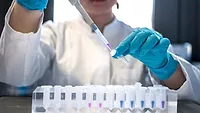EFSA Goal to Improve Food Safety Risk Assessment with Better Chemical Exposure Science by 2030

Credit: PublicDomainPictures (publicdomainpictures-14) via Pixabay
Through a project called ExpoAdvance, by 2030, the European Food Safety Authority (EFSA) and its EU partners aim to be ready for the routine implementation of human health risk assessments regarding aggregate, dietary and non-dietary exposure to chemicals. Within the same time frame, the agency also strives to improve its exposure assessment for mixtures of multiple chemicals, and developed a roadmap for action.
According to the EU Chemical Strategy for Sustainability, chemical risk assessment must evolve to account for different routes and sources of exposure. The objective of ExpoAdvance is to improve EFSA’s chemical exposure assessments—which are not currently conducted in a consistent manner—to better address human health risk assessment needs. Dietary chemical exposure assessments are a regular part of EFSA’s food and feed risk assessment; however, exposure through all routes (aggregate exposure) is rarely quantified, despite the fact that non-dietary exposure is often acknowledged.
Additionally, the EU Chemical Strategy for Sustainability underlines the importance of assessing human exposure to intentional and unintentional mixtures of chemicals from food and the environment, as well as the associated risks. Although the availability of methods, data, and tools for mixture risk assessment is high for dietary exposure to pesticides, more work is required to include non-dietary routes of exposure. Regulatory readiness for mixture risk assessments for food additives is fairly high, but assessment groups and computational tools must be developed. The availability of methods, data, and tools for mixture risk assessment for food-contact materials is limited. The roadmap for action defined ten research projects intended to fill key scientific gaps to prepare EFSA for the routine implementation of mixture risk assessment across its domain of work.
The success of ExpoAdvance would enable EFSA and its partners to access harmonized data to mitigate exposure to chemicals from various sources, and to bridge knowledge of internal and external exposure. More comprehensive exposure assessments would also improve EFSA’s capabilities to address future risk assessment challenges and provide enhanced risk assessment methods for food and feed safety.
Looking for quick answers on food safety topics?
Try Ask FSM, our new smart AI search tool.
Ask FSM →









